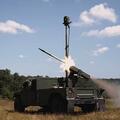

Overview
L3Harris has always been known for delivering high-quality simulators. With the Orchid® product suite, L3Harris continues this tradition with a complete, cutting-edge simulation software environment.
The Orchid® tools have been highly integrated to create an effective and efficient working environment. Each tool follows a standardized approach, providing the same guidelines for menu structure, icons, documentation and even training material. By focusing on the use of common icons, layouts, themes and menus, we have been able to minimize our users’ learning curve in adopting the Orchid® products.
Features and Benefits
Orchid® features the latest in graphical user interfaces using an enhanced, modern look and feel, and providing an unparalleled level of customizability. Each Orchid® application comes loaded with new features that help our users utilize our tools as efficiently as possible. User manuals, help menus and tool tips are all accessible directly from within the tools. All Orchid® tools also come with InstallShields, making each Orchid® application easy to install and to upgrade to newer versions.
Our tools are now faster and easier to maintain than ever. Orchid® supports recent releases of third-party software operating systems, database management tools and software compilers.
Using important feedback from our user community, we’ve incorporated hundreds of new features, making the Orchid® product suite a powerful and complete set of tools for all your simulation needs.
With our complete Orchid® product suite, we continue to provide the highest standards of quality to all of our customers, aiming for even higher levels of customer satisfaction.

L3Harris Marks Half-Century Milestone Developing Nuclear Power Plant Simulators
Read MoreThe Orchid® Suite
Orchid® Instructor Station

State-of-the-art Modular Instructor Facility for Controlling Simulator Training Environments
TOTAL SIMULATOR TRAINING CONTROL
Orchid® Instructor Station is L3Harris’ instructor station designed to assist the instructor in controlling the training environment while monitoring all aspects of trainee and simulator performance. Orchid® Instructor Station incorporates a state-of-the-art Java server, offering a portable, flexible, and functionally rich software solution.
Orchid® Instructor Station is an advanced and innovative simulation software package. Its modular design allows it to be integrated into any existing simulator environment or perfectly coupled with our simulations. Orchid® Instructor Station comes with a full Windows-based desktop and tablet clients.
Designed with customizability and user ergonomics in mind, all standard windowing features are supported. High-resolution graphic pages, based on Orchid® Graphic Editor graphics, create an intuitive and user-friendly interface which can be easily panned, zoomed and cropped for maximum versatility. Dynamic virtual panels and system schematics reflect plant states in real-time, using symbols, readouts, and colors to represent the current simulation status.
The scenario manager is an important discriminator of Orchid® Instructor Station. Utilizing a graphical flow-chart approach, scenario automation can easily be accomplished by performing actions and capturing them into the scenario in edit mode. This feature, which also incorporates error checking, allows scenarios to be created effortlessly by the instructors by dragging and dropping actions, malfunctions and other steps without any compilation or linking. The scenario manager includes an easy-to-use student assessment system.
Orchid® Instructor Station is also equipped with a user-friendly scenario-based testing (SBT) facility that simplifies data collection, archiving and report generation.
Well-integrated with the other Orchid® applications, Orchid® Instructor Station hosts all the Orchid® Modeling Environment schematics dynamically, allowing the user to search and nd any device or object that is part of the model. For example, the instructor could seek an individual fuse and disable it. In this way, the user can access all the model schematics to dynamically monitor and control the modeled plant systems and subsystems in the same way as the virtual panels, making Orchid® Instructor Station an ideal classroom tool.
FEATURES
- Intuitive and ergonomic graphical user interface
- Built-in security features
- Searchable malfunction/remote function menus
- Graphical scenario manager
- Trainee Performance Review for scenario-based student evaluation and record keeping
- Integrated panel diagnostics feature
- Online deficiency logger (with playback for deficiency resolution)
- Monitoring, plotting and data recording, including drag and drop capabilities, X vs. Y plots, comparison overlays, saveable workspaces and data export to 3rd party applications
- Automated regression testing feature (AutoTest)
- Ability to access all Orchid® Modeling Environment graphics in run-time
- Support for various modes of operation: classroom mode, instructor mode, operator mode, engineering mode
- Customizable settings and instructor layout features
- External controls from Microsoft Office documents using ActiveX
- Advanced monitoring, plotting, and data recording features
BENEFITS
- Easy to learn and use, reducing training of new instructors
- Convenient initial condition (IC) editor reducing simulator maintenance time and effort
- Reduced time and effort involved in regression testing
- Decreased configuration update time, leading to reduced backlog of simulator changes
- Single environment for use in full scope simulator and classroom simulator
Orchid® Core Builder

Design-Grade Neutronics Rapid Model Development
Orchid® Core Builder is L3Harris' graphic tool permitting easy creation and validation of cycle-specific fuel data, used by our Advanced Reactor Kinetics Model. Orchid® Core Builder provides 2D and 3D graphics to fully validate and document the input fuel data and the output model, together with user-defined test reports. Orchid® Core Builder incorporates the Nodal Expansion Method (NEM) to produce advanced reactor kinetics models. The core neutronics model is based on the fundamental equations of time-dependent neutron diffusion theory. Diffusion equations are solved at each time step using reactor design code techniques. The models developed with Orchid® Core Builder are true two-group, three-dimensional, multi-nodal, fully dynamic models computing in real-time the flux for each node at each time step.
More than a high-fidelity core neutronics model, Orchid® Core Builder provides real-time feedback on simulated neutronic parameters through its unified user-friendly graphical interface. Users can select specific fuel assemblies and obtain axial distributions of the following parameters:
- Power
- Fuel temperature
- Moderator temperature
- Moderator density
- Moderator void
- Xenon concentration
- Samarium concentration
Users also can view and rotate a dynamic three-dimensional image of those same parameters at different axial levels. This way, the user to visualize on a 3D flux map, in real-time, the core dynamics such as the effect of dropping a rod.
FEATURES
- NEM-based simulation
- Automated fuel data conversion for multiple fuel codes
- Capability of fine tuning fuel data
- Graphical user interface showing core neutronics parameters in real time
- 2D and 3D flux maps
- Automated reactor model initialization
- Automated updating of initial conditions following burn-up and/or fuel cycle updates
- Considers power history
BENEFITS
- Highly precise core modeling, ensuring realistic responses
- Can be integrated with third-party simulation models
- Easily integrated with thermal-hydraulic models
- Useful as a training or teaching tool, showing the inner workings of the reactor
- Simplifies modification of core parameters
- Eliminates maintenance costs of fuel-cycle updates
Orchid® Modeling Environment

Advanced Real-time Graphical Component-based Simulation Environment
RAPID MODEL DEVELOPMENT AND RUNTIME ENVIRONMENT
Orchid® Modeling Environment is L3Harris' powerful object-based design and modeling tool for simulators and control systems. It is ideal for modeling complex systems and allows testing under “real world” conditions quickly and inexpensively. Orchid® Modeling Environment is designed to support collaborative team efforts by allowing users to design and develop either locally, over a local area network, or remotely to create and run simulations. Orchid® Modeling Environment represents decades of ongoing simulation and control systems software development. Combining user-friendly design tools, plant data, and interactive documentation, Orchid® Modeling Environment allows users to quickly build and modify objects, subsystems, and complete simulations, offering unprecedented flexibility and ease of use.
Orchid® Modeling Environment utilizes a complete set of library objects, built up with over three decades of experience, to model all components of your power plant, from containment, to control, to electrical, to single and two-phase thermal-hydraulic components. Using the powerful Orchid® Graphic Editor, schematics are quickly assembled to resemble the plant’s piping and instrumentation diagrams (P&ID), allowing objects from different libraries (such as electrical and hydraulic components) to be placed on the same schematic.
FEATURES
- Real-time simulations based on first-principle models
- Graphical icon-based model editors
- Intuitive inter-schematic browsing
- Object-oriented design with automated code generation
- Mature multi-disciplined object libraries and code generators
- Single development environment for all model types, including single and two-phase hydraulics, electrical, and I&C
- Integrated object calibrators
- Debugging, test and validation capacity
- Multi-user distributed client/server environment
- Customizable user interface
- Open architecture
- SQL database
- Built-in configuration management features to control concurrent simulator updates • Compound objects
- Drag and drop capability
- Pan and zoom navigation schematics
- Link objects and schematics to reference data
- Ability to manage external source code
- Supports multiple versions of schematica and libraries with rollback capability
- Automatic version comparison
BENEFITS
- Simulation-based design provides end-to-end validation of conceptual design
- Build, operate and test design prior to committing substantial resources
- Objects and models used for all aspects of the project, from conceptualization to implementation and lifecycle support
- Rapid model development and subsystem integration
- Focuses project teams on critical design issues
- Reuse of design simulation for operations/training
- Promotes concurrent engineering
- Provides interoperability with other distributed simulations
- Used for rapid prototyping of control system designs
- Provides detailed runtime graphics for each plant system
Orchid® Control System

Simulator-Ready DCS Human-Machine Interface Simulation
INTEGRATED DCS HUMAN-MACHINE INTERFACE SIMULATION
Orchid® Control System is L3Harris' application for the emulation of operator stations for plant process computers (PPC) and Digital/Distributed Control Systems (DCS). Orchid® Control System is a real-time data acquisition and control system comprised of geographically distributed nodes. It is used for the monitoring and automation of electrical substations and power generation equipment. Orchid® Control System's well-integrated architecture provides a complete solution to customers, including operator user interfaces and control sequence development tools through the same interface.
By replicating the existing look-and-feel of the actual display system, Orchid® Control System provides a realistic testing and training environment. With its proven track record of emulated systems, Orchid® Control System offers an economical and flexible alternative to stimulated DCS solutions and supports all standard simulator functions, such as run/freeze, restore, backtrack, replay, and others, making it the ideal tool for the emulation of DCSs. Moreover, Orchid® Control System is based on a scalable architecture, allowing users to freely add or remove stations as needed.
Orchid® Control System is often accompanied by a system-specific translator that processes the actual plant DCS or PPC control and graphic files to generate emulated solutions. This approach is ideal for testing modifications in the test system and exporting the results to the simulator.
FEATURES
- Built-in support for typical operator station functions: alarms, reports, trends, history, and point data displays.
- Built-in graphic editor.
- Automatic graphic display generation.
- Automatic database generation.
- Built-in interfaces to our simulator modeling and instructor station.
- Inherent support for simulator commands.
- Built-in database maintenance tools.
BENEFITS
- Provides an economical, flexible alternative to stimulated hardware solutions.
- Removes dependency on stimulated hardware, allowing multiple copies of the simulation to be created.
- Simulation-based design provides end-to-end validation of conceptual design.
- Used for rapid prototyping of control system designs.
- Build, operate and test design prior to committing substantial resources.
- Rapid control logic updates and integration.
- Provides interoperability with other distributed simulations.
Orchid® Graphic Editor

Development Environment for Graphical Control Panel and Purpose-built Schematics
PHOTO-REALISTIC VIRTUAL PANELS
Orchid® Graphic Editor is L3Harris' development tool for the creation, modification, and testing of sophisticated real-time graphical displays. Using a true world coordinate system and an advanced tiling and layering scheme, Orchid® Graphic Editor is capable of creating dynamic virtual panel displays and active schematics used to provide a useful and interactive instructor and/or student simulator interface.
Orchid® Graphic Editor produces vector-graphics displays that can be magnified without loss of resolution. The graphical displays support full pan and zoom navigation using mouse or keyboard, making Orchid® Graphic Editor a powerful application for simulation purposes.
Through a simple graphical user interface, Orchid® Graphic Editor provides access to complete libraries of objects for panel displays and learner-oriented plant system schematics. Each library object is embedded with dynamic functionality accurately reproducing the real device behaviors. Library objects are even equipped with shadows and real-time trend lines, ensuring a truly realistic reproduction of panel displays.
Virtual panels can be easily created by dragging and dropping these objects onto a canvas. Orchid® Graphic Editor is also unique in featuring a single-world approach to panel graphics, where all panels are laid side by side in a single graphic instead of being separated into segregated panel portions. This allows users to pan across several panels or to zoom into a section across adjoining panels.
Designed specifically for application in training simulators, the virtual panel displays can show additional information, visible only to the simulation instructor (instructor mode) to provide better feedback and control, while the same information is suppressed from the student or operators (operator mode) to prevent negative training from occurring.
FEATURES
- Object-oriented design & development
- Pre-programmed dynamic behaviors
- Extensive panel instrument libraries
- Debugging, test, and validation capacity
- Drag-and-drop capability
- Pan and zoom navigation schematics
- Supports single-world graphics (no breakdown of graphics into sections)
BENEFITS
- No graphical build step required
- Changes can be made and tested on the fly
- Photo-realistic soft panels
- No loss of resolution at any magnification
Orchid® Touch Interface

Extending the Benefits of Classroom Simulation while Offloading the Full Scope Simulator
EXTENDING THE BENEFITS OF CLASSROOM TRAINING
Simulator users have already invested in their high fidelity simulators with L3Harris virtual panels which run on the instructor station and which are also available in student mode. Take it a step further with Orchid® Touch Interface. Offload the demands on your full scope simulator by reusing the exact simulation software and virtual panels without a significant investment. With new and improved large touch screen technology, we now bring classroom training to another level with Orchid® Touch Interface.
HARDWARE CONFIGURATION
Orchid® Touch Interface takes our control and auxiliary room panel displays to a new level of realism. High fidelity panel graphics are displayed on large touch screen monitors with 1080p (full HD) resolution. The monitors are mounted on frames and can be arranged in many different configurations to mimic different control rooms. Orchid® Touch Interface can be used on one bay of large touch screens capable of displaying all panels of the control room or several monitor bays configured differently to replicate different control room layouts.
Use one bay of large touch screen monitors or reproduce the entire control room with multiple monitor bays.
The top monitor of three-monitor bay articulates allowing passage through a standard 32" x 84" doorframe. Each bay is mounted on swivel casters for easy maneuvering from one room to another. Levelling pads are also provided in each bay to fix them in place once they are rolled into their final destination.
A two-monitor version is also available for desk operations.
USER INTERFACE
Orchid® Touch Interface's touch screen interface allows students to operate the panel graphics manually and obtain life-like visual and audible real-time responses.
To keep training as realistic as possible, the popular panning and zooming of the soft panels in the instructor station are disabled for Orchid® Touch Interface, providing individual students and teams the opportunity to know the actual location and orientation of panel devices that are vital to operating your plant. Navigation can be performed from one panel to another without the risk of having an unrealistic layout of panel devices.
In an environment where all panels are not visible at the same time, off-view annunciators can be missed, creating a gap in training. With Orchid® Touch Interface, any time an off-screen alarm actuates (annunciators located on panels in an area that the learner is not presently looking at), an indicator appears to warn the student. With a simple touch of that same indicator, an overview of the control room is displayed, indicating which panel is in alarm. From that same interface, the student can then navigate to it quickly.
BENEFITS
- Full-scale control room training environment at a fraction of the cost of your full scope simulator, capitalizing on the investment you have already made.
- Life-like training environment to augment your current full scope simulator environment, for both individual and team training.
- Offload your full scope simulator by using a device that fits the needs of young learners
- Our client-server architecture guarantees realistic response times for all virtual panels, whether the simulated plant is in normal conditions or a severe transient is being experienced.
- Take full advantage of the powerful instructor station capabilities you already have through Orchid® Instructor Station with Orchid® Touch Interface
Orchid® Simulator Executive

Graphical Real-time Simulator Task Scheduler
INTUITIVE AND COMPREHENSIVE REAL-TIME SIMULATOR EXECUTIVE
Orchid® Simulator Executive performs the real-time scheduling of the simulation. The simulation modules (or programs) are scheduled for execution by a simulation dispatcher. Dispatchers are organized by synchronous and asynchronous types, whereby the synchronous tasks are assigned a higher real-time priority than the asynchronous tasks, which are not time critical.
Orchid® Simulator Executive supports multiprocessor multi-core computers, allowing simulations to run in a balanced fashion across all available CPUs. The executive ensures that the task for each processor is synchronized with the master task to ensure real-time execution.
Orchid® Simulator Executive integrates performance reporting at the task, frame, or individual module level, and the information is readily displayed on-screen. Each process, band, leg, or module can be unlinked and relinked to the executive through the graphical user interface, allowing the user to perform debugging tests. Each module can also be dragged and dropped into different bands through the same interface, enabling the user to better balance the usage of the different processors.
Orchid® Simulator Executive also manages the speed of the simulation, allowing overall simulation speed-up and slowdown, and even features a “free-run” mode, allowing the simulator to run as fast as possible. Orchid® Simulator Executive detects frame overruns and provides error exception handling. Runtime error messages which are generated by the underlying third party compilers (under‑flow, overflow, floating point exception, array out of bounds, etc.) are indicated in a log window by type of error along with additional information allowing the user to diagnose the issue. This information is stored in a file for post-analysis and debugging.
FEATURES
- Graphical user interface
- Runtime for easy simulator oversight
- Quickly generate timing and logging reports
- Real-time debugging by unlinking and relinking modules on the fly
- On-screen timing information
- Extensive timing and utilization reports
- Timing histograms exported to Excel
BENEFITS
- Offers on the fly maintenance features
- Cuts down on effort involved in debugging timing and module order issues
- Improved access to dispatcher information
- Integrates timing and reporting capabilities into a single application
- Provides comprehensive error reporting and debugging capabilities for quick problem resolution
Orchid® Configuration Manager

Fully Integrated Graphical Simulator Configuration Management Utility
INTEGRATED SIMULATOR CONFIGURATION MANAGEMENT
Orchid® Configuration Manager is L3Harris' simulation configuration management application. Orchid® Configuration Manager manages application software source code and simulator configurations.
Orchid® Configuration Manager handles all operations required to make modifications and updates to your simulator configuration. Through its easy-to-use graphical interface, the user can access all functions required to update simulator configurations, including database management and regeneration of configuration modules.
Orchid® Configuration Manager offers fully graphical debugging capabilities, allowing the user to effectively resolve simulation issues.
Orchid® Configuration Manager is used to efficiently manage configurations both locally and over the simulation network. Configurations can be created, copied, renamed, password-protected, backed up, deleted, and restored. Orchid® Configuration Manager stores all the elements required by the runtime simulator within its configurations, including application model source code, compiled executables, databases, graphics, setting files, initial conditions, and lesson plans. This way each simulator configuration is stand-alone and can be easily dispatched or retrieved in full, at any time; a mechanism that ensures proper reversibility.
At the network level, Orchid® Configuration Manager’s powerful configuration server mechanism can be enabled. This feature addresses the complexity of managing copies of the simulator configuration across different machines, a process that is error-prone if performed manually. Orchid® Configuration Manager can be configured to point to a central repository of information, through which configurations can be checked in/out from any machine on the network. Orchid® Configuration Manager indicates the status of local configurations in comparison to those stored in the central repository. Through Orchid® Configuration Manager, users can check out configurations from the server (either a full configuration with all source, or only the executables and runtime elements) or check in a locally modified configuration to make them available to other machines. Through this mechanism, configuration management errors can be reduced, and redundancy across the network machines can be properly managed.
FEATURES
- Support for multiple configurations
- Extensive logging and reporting features
- Graphical debugging capabilities
- Built-in configuration management features
- Configuration check-out/check-in for distributed development environments
- Export simulation to run off a USB key (jump drive/memory stick)
BENEFITS
- Reduced maintenance effort and configuration update lead times
- Greatly simplifies complex configuration management tasks
- Allows export of runtime simulation to a memory stick, expanding training capabilities (portable USB Simulator)
- Efficient and centralized management of multiple simulator configurations
Orchid® Network Loader

Multi-Platform Distributed Simulator Component Loader
Orchid® Network Loader is L3Harris' tool for detecting and controlling simulation software over the network. Orchid® Network Loader supports both Linux and Windows platforms, and works by detecting instances of itself installed across the computer network.
Through Orchid® Network Loader, users can:
- Load and unload the simulation
- Monitor the status of simulations on the different servers across the network
- Identify which machines are online and communicating with other network machines
- Synchronize elements across different computers
Orchid® Network Loader is designed to execute predefined scripts across the simulation network computers, allowing its users to load all the distributed elements of a simulation from a single station, with the click of a button. Regardless of the programs needed to be loaded for the simulation, Orchid® Network Loader will dispatch the load and unload commands across the network, including the plant simulation on the simulation server, the instructor station programs on several workstations, and any other programs on stimulated devices and peripheral machines.
Orchid® Network Loader’s usefulness is also demonstrated in the classroom setting, allowing instructors to configure and launch the simulation on the various desktops in a classroom. The instructor could choose to load different plant simulations on each student’s computer or configure the entire classroom to run under a single environment.
Orchid® Network Loader also offers powerful synchronization features, allowing users to synchronize various elements of the simulation software across the network machines. Using Orchid® Network Loader, users can dispatch new simulation configurations to all desired server machines, simplifying the configuration update process and eliminating configuration management errors.
FEATURES
- Monitoring status and activity of the separate computers on the network
- Defining subgroups for different simulation networks (classroom, hard panel, etc.)
- Synchronizing feature to dispatch updated elements of the configuration to the selected machines across the network
- Open architecture for creating new scripts and services
- Support for more advanced networking functionality
- Visual warning when a computer is taken offline
- Auto starts when a computer is brought online
BENEFITS
- Simple and easy loading and unloading of the different simulation components
- Provides real-time feedback on network status
- Manages all distributed elements during a simulation load and unload
- Reduces the reliance on simulator staff for loading/unloading of simulator and its components
- Allows for shorter reload times
- Provides synchronizing features, helping to reduce maintenance efforts
Orchid® Multimedia Manager

Effective Training Session Monitoring and Debriefing
Orchid® Multimedia Manager is part of L3Harris' Orchid® product suite used for audiovisual recording and playback of simulator training sessions. Linked to a simulator control room’s cameras and microphones, Orchid® Multimedia Manager replaces traditional audio-visual recording systems by recording real-time audio and video directly onto a PC-based platform.
Designed to be integrated with any L3Harris simulation or as a plug-in for other simulator platforms, recording and playback are synchronized to the instructor station’s run/freeze and record and replay functions, and enable the user to replay the various video and audio feeds in sync with the simulation playback.
A powerful tool for training session debriefing, Orchid® Multimedia Manager provides instructors the ability to synchronously replay both simulation and recorded video/audio. During debriefings, the instructor can select a backtrack point from Orchid® Instructor Station and replay the entire simulation, while the recorded control room environment footage is played back synchronously.
Orchid® Multimedia Manager operates in two different modes:
- Synchronized Mode: Orchid® Multimedia Manager operates in step with the simulation and receives all backtrack, store and restore commands. The instructor can insert manual time markers by simply clicking the marker button within Orchid® Instructor Station. Markers are displayed on Orchid® Multimedia Manager’s progress bar, which also displays all replay points.
- Stand-Alone Mode: Orchid® Multimedia Manager is manually controlled by the instructor for recording and playback. Once the sessions have been recorded, Orchid® Multimedia Manager can be used to replay the various sessions on a separate computer, typically for debrief sessions.
Orchid® Multimedia Manager typically runs on a dedicated PC connected to the simulator network and is displayed on one or more large monitor(s) located in the instructor facility.

FEATURES
- Orchid® Multimedia Manager can easily be connected to an L3 Harris simulator or a third-party simulator
- Support for analog and IP cameras (most of the commercially available A/V equipment)
- Supports up to 48 video and/or audio channels
- Orchid® Multimedia Manager can be time-synchronized with the simulator and support synchronized A/V playbacks
- Insertion and display of markers used for post-analysis either directly from the Orchid® Multimedia Manager UI, through a simulator database variable which can be mapped to a hardware button or through an instructor station soft button
- Recording and playback of a selectable set of 50 simulator parameters (e.g. reactor power, levels, flows, etc.) directly inside the Orchid® Multimedia Manager UI to facilitate comprehensive debriefing in Stand-Alone Mode
- IP camera controls integrated directly into the Orchid® Multimedia Manager, with support for commercially available joysticks for pan/tilt/zoom control
- Stores files using an industry-standard AVI format which can be replayed using any standard video software program
- Video recording and playback of computer screens (plant computers and DCS pages)
- Preview of all cameras to allow the monitoring and playback of all cameras at all times
- Recording of audio from different microphones separately so that they can be controlled individually during playback
- Provision of audio output during real-time monitoring
- Direct connection to hardware I/O for “on air” indication in the main control room
BENEFITS
- Facilitates the implementation of the U.S. NRC recommendations regarding the video and audio recording (NUREG-1021, Rev. 10)
- Fully synchronized with the simulation functions, such as freeze, run, restore, store backtrack, replay, etc. (no need for manual intervention to start and stop the recording)
- Preview and/or playback available on any computer linked to the simulator network (instructor booth, debriefing room, etc.) with direct access to the recorded A/V
- Debriefing capability outside the simulator network by using the Orchid® Multimedia Manager client (or any commercial video viewer) from external media (flash disk or media device)
- Flexible architecture supporting analog and/or IP cameras and microphones
Orchid® Communications Exchange

Emulating Multi-party Communications in Simulation Environments
Orchid® Communications Exchange is L3Harris' software platform to simulate communications systems for applications within control room training simulators. The platform is fully configurable to simulate any communication system and runs on commercial off-the-shelf (COTS) hardware.
In an actual ship or power plant, operators have access to diverse communication systems such as telephones, public-address systems and touch-capable communication panels to be able to communicate with other areas of the ship or plant.
In a simulated control room, operators must likewise have access to the same communication systems. However, since the remote location being called is not always simulated, instructors in the instructor booth must “role play” the remote site operators. When this occurs, the operator using the communication systems must have the impression that he/she is dealing with an actual remote system operator. This includes dialing the correct number of the remote operator and hearing the appropriate background noises when the communication occurs. Orchid® Communications Exchange provides the backbone to provide these capabilities.
For most projects, Orchid® Communications Exchange will require some customization to replicate the exact look and feel of the target communications systems. For example, we are able to modify an actual plant phone to add simulation capabilities such as processing the dial keys, volume control, off/on-hook, etc. Orchid® Communications Exchange is based on and compatible with the other Orchid® tools.
While customization may be required to interface to plant-specific equipment, Orchid® Communications Exchange does this entirely with COTS hardware: Windows PCs for call management and sound recording/playing, off-the-shelf amplifiers and adapters for earpiece and microphone interfacing, and our compact I/O solution for pushbutton, keypad, and visual indicators interfacing.
FEATURES
- Allows control room operators to make voice calls to outside the control room locations. The calls are automatically forwarded to the instructor
- Allows the instructor to see which area (telephone number) is being called, and to answer as if the call was being answered from that location
- The system automatically superimposes background noise if the simulation conditions are in a state which would cause the called location to be noisy. For example, if the operator calls the turbine room and the turbine is running, the operator will hear a turbine rumble during the call
- Supports various real-life communication modes: one-to-one calls, conference calls, broadcasting, transfers of calls, hold, etc.
- Supports public address and broadcast speakers for general notifications
- Supports instructor-initiated failures such as dropped lines and communication failure
BENEFITS
- Low-cost emulation of communications systems
- Use of COTS hardware and software to emulate target communications systems for reduced maintenance costs
- Fully integrated with simulation environment
Orchid® Sound System

Simulator Control Room Sound and Noise Utility
SIMULATOR CONTROL ROOM SOUND GENERATION
Orchid® Sound System is L3Harris’ application for simulating plant sounds in the main control room. Orchid® Sound System is designed to enhance simulations with a set of sounds played through the simulator sound system, allowing for a truly realistic training experience. Orchid® Sound System supports a variety of sounds and noises, from control room ventilation background noise, to the opening of Atmospheric Steam Valves or the winding up of the large Reactor Coolant Pumps.
Orchid® Sound System uses DirectX technology to play recorded “.wav” plant sounds automatically triggered by the simulation models. Orchid® Sound System allows the remote activation of these sounds in a continuous or single play-fashion. Special sound algorithms such as audio count rates are also supported.
FEATURES
- Multi-channel system
- Full control of individual sound volume and frequency
- Global sound volume control
- Client/server architecture
- Can be used in classroom simulators to provide full audible feedback
BENEFITS
- Supports full range of sounds and noises
- Provides audibly realistic training sessions
- Inexpensive implementation of sound generator
- Supports use of off-the-shelf sound cards
- Can be connected to commercially available speaker systems
Orchid® Input Output
Versatile Simulator I/O Communication and Diagnostics
SIMULATOR INPUT/OUTPUT CONFIGURATION AND GRAPHICAL DIAGNOSTICS
Orchid® Input Output is L3Harris' software application for communication with the simulator control room hard panels. The I/O system drives a multitude of switches, lamps, meters and various other instruments available to the operators in the main control room. Orchid® Input Output provides users with full graphical control, monitoring, debugging, and reporting capabilities.
Orchid® Input Output is designed as a distributed application program, enabling the user to view information from any I/O chassis in the system. Using a graphical user interface, the user can obtain information on the I/O cards of a specific chassis and drill down to the individual I/O point level - the connector pins (analog input, analog output, digital input, and digital output) - to view or set individual point values. Orchid® Input Output is a state-of-the-art monitoring and debugging application, providing a greater amount of visibility and feedback into the I/O system than other I/O applications.
Orchid® Input Output supports several independent I/O platforms, including Datapath SC, VDMC, PCI-based, WAGO, and Beckhoff systems. One of Orchid® Input Output’s strengths is that it can support any combination of these different I/O systems on a single network, allowing our customers to upgrade parts of their systems (just a few I/O chassis, for example) without requiring a full I/O replacement.
FEATURES
- Automatic reconnection if communication between chassis and simulator is severed
- Streamlined communication protocol transmitting only value changes after initial update
- Error checking and reporting at the chassis level, connector pins, or point level
- Detailed log of all I/O communication events
- Possibility of adding specific point traces and monitors
- Intrinsic support for devices with unwired positions
- Support for mathematical calculations directly within I/O system
BENEFITS
- Provides unparalleled level of visibility and feedback on I/O system
- Equipped with tracing and debugging capabilities for quick troubleshooting and resolution of issues
- Eases integration with complex stimulated devices
- Automated regeneration of points database for quick and painless updates
Resources
Related Solutions

Certifications | L3Harris Montreal, Canada
LEARN MOREAffiliations










Related News
Related Domains & Industries
Contact Us




















